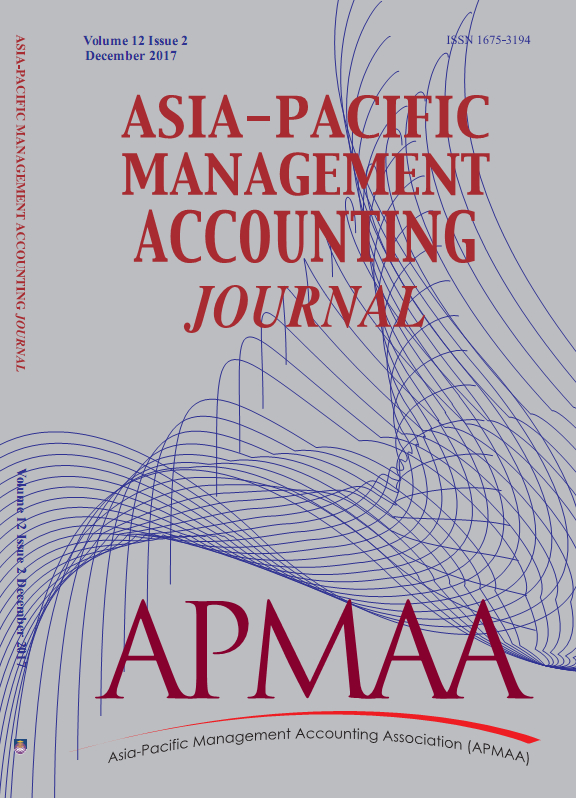Volume 14 Issue 3, December 2019
ARTICLE INFO
Article History:
Received: 1 August 2019
Accepted: 7 November 2019
Published: 31 December 2019
ASIA-PACIFIC MANAGEMENT ACCOUNTING JOURNAL, VOLUME 14 ISSUE 3
THE RELATIONSHIP BETWEEN FINANCIAL LEVERAGE AND LIQUIDITY, AND FIRMS’ PROFITABILITY OF THE AGRICULTURAL INDUSTRY: EVIDENCE FROM MALAYSIAN LISTED FIRMS
Muhamad Adhwa Zulkipli1, Nik Anis Idayu Nik Abdullah2 and Amrizah Kamaluddin3
1Banking Supervisor, Central Bank of Malaysia,
Jalan Dato’ Onn, 50929 Kuala Lumpur
E-mail: This email address is being protected from spambots. You need JavaScript enabled to view it.
2Faculty of Accountancy, UiTM Selangor, Kampus Puncak Alam,
E-mail: This email address is being protected from spambots. You need JavaScript enabled to view it.
3Associate Professor, Faculty of Accountancy, UiTM Selangor, Kampus Puncak Alam,
E-mail: This email address is being protected from spambots. You need JavaScript enabled to view it.
ABSTRACT
This study examined the relationship between financial leverage and liquidity with firms’ profitability of the Malaysian agricultural industry between 2011 to 2015. Additionally, the study attempted to examine the ability of both financial leverage and liquidity in predicting firms’ profitability. Financial ratios of 40 agriculturural firms’ that were listed in the Bursa Malaysia Main Board were taken as the sample. The selected variables for the study were Debt Equity Ratio (DTE), Interest Coverage Ratio (ICR), Proprietary Ratio (PR), Current Ratio (CuR), Quick Ratio (QR) and Cash Ratio (CsR) as the independent variables whilst Return on Capital Employed (ROCE) was the dependent variable. The study discovered that significant relationships exists between both financial leverage and liquidity and firm profitability. In addition, both financial leverage and liquidity are also significant to explain and predict firms profitability. The results confirm the trade-off theory, which suggests that firm profitability would increase as the level of debt increases, but only to an optimal level where any subsequent increment in the firms’ debt level upon reaching its optimal level would result in the contraction of its profitability.
Keywords: financial leverage, liquidity ratio, firm’s profitability, agriculture firms
Keywords: financial leverage, liquidity ratio, firm’s profitability, agriculture firms


